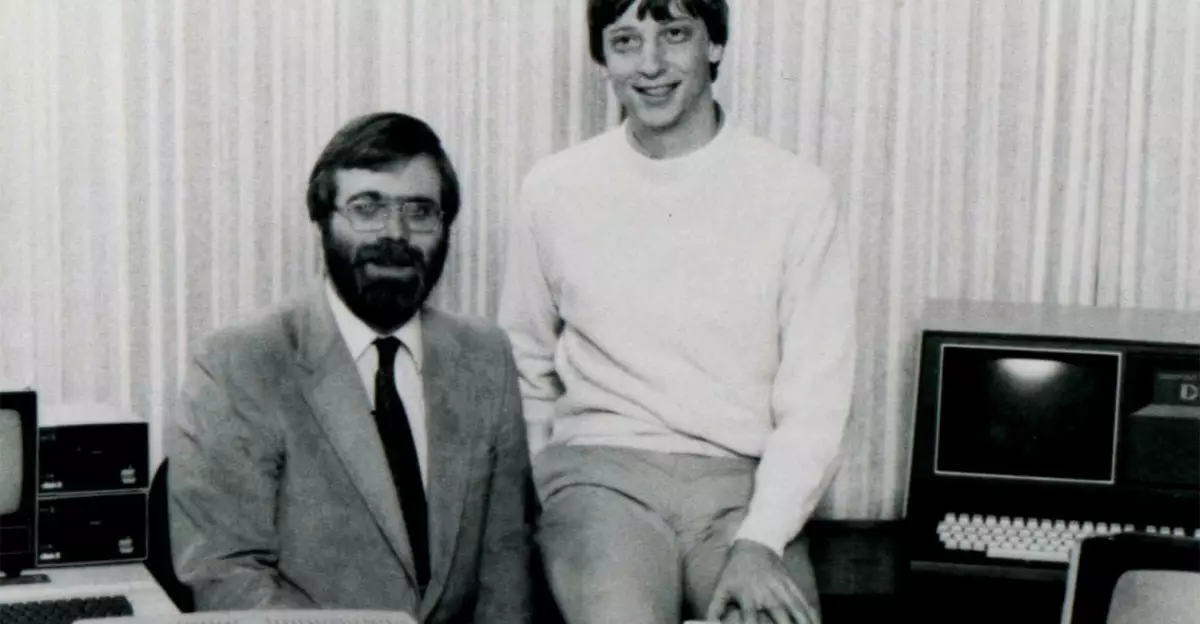Fifty years ago, on April 4th, 1975, two friends, Bill Gates and Paul Allen, embarked on a journey that would fundamentally alter the landscape of technology as we know it. Launching a venture named “Micro-Soft” (a clever play on “microcomputer” and “software”), the company aimed to develop software for the Altair 8800, an early model of personal computing. This initiative marked the inception of what would evolve into a global software empire. From its very roots, Microsoft distinguished itself by focusing on microprocessor technology during a time ripe for innovation, setting the stage for transformative digital experiences.
The ambition and foresight exhibited by Gates and Allen were remarkable; they understood that the personal computer was not merely a tool but a gateway to potential economic and social change. This vision not only catalyzed their enterprise but also laid the cornerstone for the personal computing revolution that would soon follow. As Microsoft cultivated its nascent capabilities, a monumental partnership with IBM in 1980 allowed the company to create MS-DOS, the operating system that would dominate the IBM-compatible PC market throughout the 1980s.
Revolutionizing User Experience: The Advent of Windows
The watershed moment for Microsoft arrived with the introduction of Windows 1.0 in 1985, marking a paradigm shift in user interaction with computers. The graphical user interface (GUI) stood in stark contrast to the previously text-based interfaces, making technology more accessible to the general public. However, it was the launch of Windows 95 that truly galvanized Microsoft’s standing in the industry. The midnight release was a cultural phenomenon, with enthusiasts lining up outside stores to get their hands on copies. Windows 95 introduced iconic features—File Explorer, the desktop environment, and the infamous Recycle Bin—that are now staples of modern operating systems.
Microsoft didn’t just stop at refining Windows; it branched out into productivity applications, leading to the birth of the Microsoft Office suite. Initially released for the Mac in 1989, Office quickly proliferated and found its home on Windows PCs, becoming an indispensable tool for millions. This dual focus on operating systems and productivity software allowed Microsoft to dominate the tech landscape, solidifying its relevance across diverse user demographics and bolstering its status as a titan of technological innovation.
Beyond Software: A Multifaceted Tech Giant
As Microsoft thrived on the back of software, the company recognized the necessity of diversification. The introduction of the Xbox in 2001 showcased Microsoft’s willingness to venture into gaming, enhancing its portfolio and appealing to a broader market. The 2008 launch of Azure demonstrated a strategic pivot towards cloud computing, acknowledging the predictive shift in how businesses operated—a prescient move that underscored Microsoft’s adaptability to market trends.
Furthermore, the launch of Bing in 2009 showcased Microsoft’s ambition to compete in the search engine territory against titans like Google. While innovation in software remained at the forefront, initiatives in hardware, particularly the Surface line that debuted in 2012, promoted a synergistic relationship between hardware and software. These devices served not just as products but as vehicles to demonstrate the innovative capabilities underlying Microsoft’s ecosystem.
AI: The Next Frontier for Microsoft
As Microsoft celebrates its 50-year legacy, the company’s future appears increasingly intertwined with artificial intelligence. Expanding its Copilot features signals an influential pivot toward integrating AI in everyday use cases across its suite of products, including Windows and Office. The inclination toward AI is not merely a trend—it’s an intrinsic part of Microsoft’s strategy that could redefine how users interact with technology.
While the last half-century has been about infrastructural growth and software superiority, the next fifty years promise a similarly transformative evolution marked by AI. This evolution could have far-reaching implications for practically every aspect of the Microsoft portfolio, propelling the company to unparalleled heights. Microsoft’s upcoming anniversary events provide a platform for not just a reflection on past successes but also an exciting glimpse into the future, where technology continues to evolve and redefine our societal constructs.
In navigating this ongoing journey, Microsoft’s capacity for reinvention stands as a testament to its founders’ original vision—a world where technology is not merely a tool but a transformative force that enhances human life.

